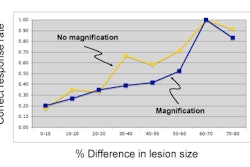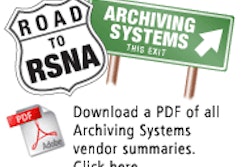A breakdown of automated fax transmission of radiology reports from the hospitals of the Calgary Health Region (CHR) to referring physicians for several weeks became the subject of front-page headlines -- "Glitch held up x-ray results: Patients' health may have been compromised" -- in the local Calgary Herald five months after the problem had been completely resolved.
Published on January 24, 2008, the article about the May-June 2007 computer glitch generated an uproar of criticism and concern by political leaders of Alberta's opposition party, the New Democratic Party, about the use of electronic medical records in the province, and implied that treatment may have been delayed for up to 40,000 patients.
This was not the case, although it was not properly explained in subsequent Calgary Herald coverage.
The computer glitch was caused by an interface configuration failure between the existing Cerner radiology information system used by all four CHR hospitals and new patient demographics management and appointment scheduling software that was being installed.
In early June 2007, administrative staff in at least one hospital radiology department began to report that the number of physicians' offices calling about not receiving faxed radiology reports had increased substantially, a CHR media relations spokesperson told AuntMinnie.com. By the middle of June, administrators of the diagnostic imaging department realized that the number of calls was not diminishing.
Upon investigation, the computer glitch was identified. But because of differences in workflow between acute care facilities and the staggered implementation of the new software, only a portion of the total number of reports routinely autofaxed had been affected. It was not possible to definitively identify which reports had not been autofaxed or subsequently manually sent upon physician request.
The diagnostic imaging department switched to manual fax transmission as soon as the problem was identified. It also mailed a letter in July to all physicians in its autofax database, apprising them of the problem and requesting that affected patients' records be verified.
Because the response from physicians' offices to the letter was lower than expected, CHR decided that it should err on the side of caution and send copies of all reports prepared during this time frame to the referring physicians, even though it felt that the majority of reports would be duplicates. In September, some 2,000 area physicians received up to 40,000 radiology reports.
Although CHR spokesman Mark Kastner told the Calgary Herald that the situation "had the potential to impact patient care," the diagnostic imaging department continued its protocol of telephoning physicians with the results of urgent care patients needing immediate treatment. Most physicians who chose not use Web RIS/PACS viewing were very proactive about notifying the department, according to Kastner.
CHR considered the matter resolved, and did not think it necessary to report the matter to the media. The Calgary Herald thought otherwise when it learned of the problem in January 2008.
Provincial opposition parties criticized CHR for not immediately reporting the problem and called the situation a "red alert" about the rollout of electronic health records throughout Alberta.
By Cynthia Keen
AuntMinnie.com contributing writer
March 19, 2008
Related Reading
HIMSS survey: EMR tops healthcare IT plans, February 25, 2008
High-tech communication tools improve patient care, studies find, December 6, 2007
Rhode Island sets off on path for statewide HIT exchange, September 21, 2007
RIS-SR-PACS combo speeds radiology reporting, April 17, 2007
U.S. takes steps to ramp up HIT efforts, February 23, 2007
Copyright © 2008 AuntMinnie.com



















